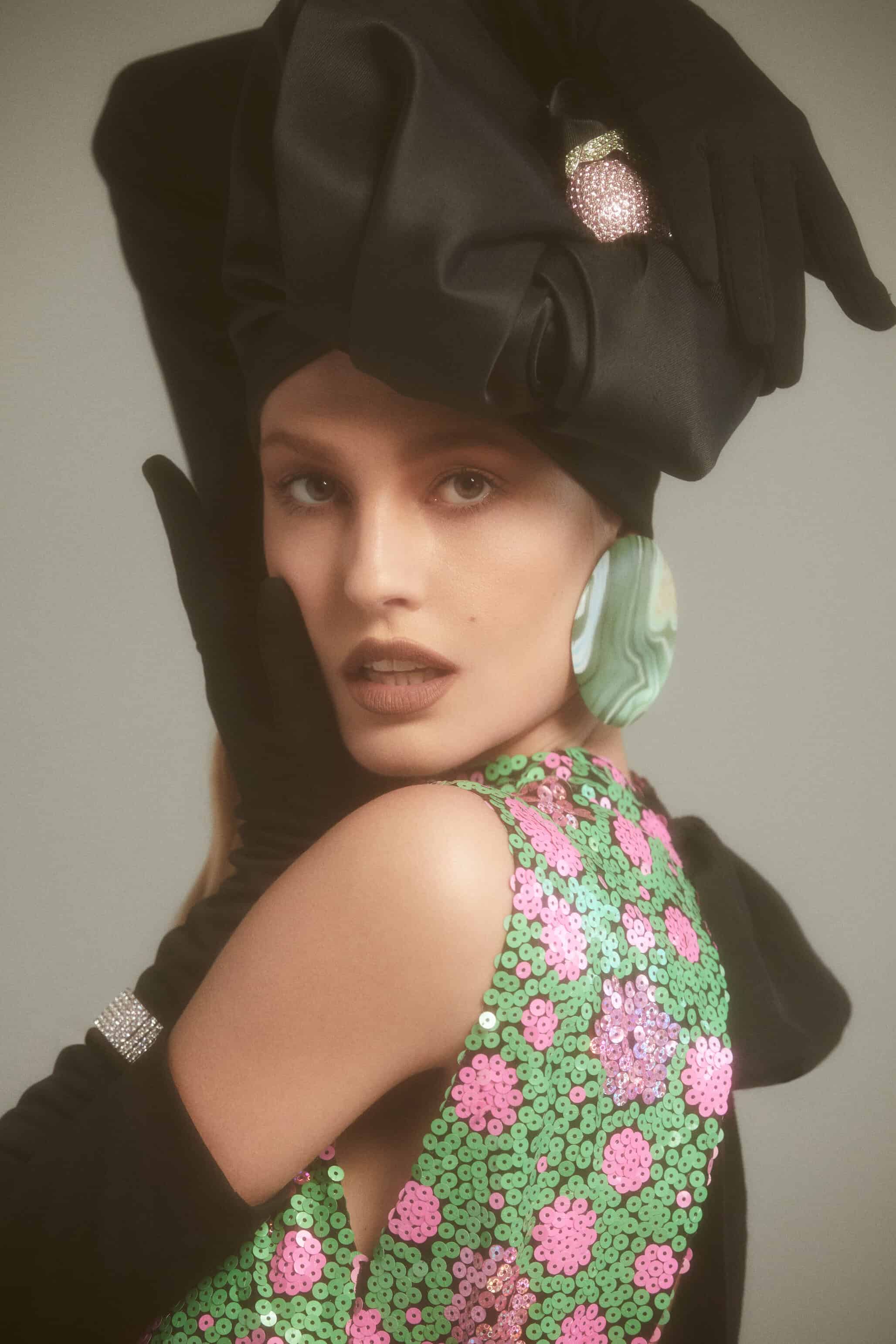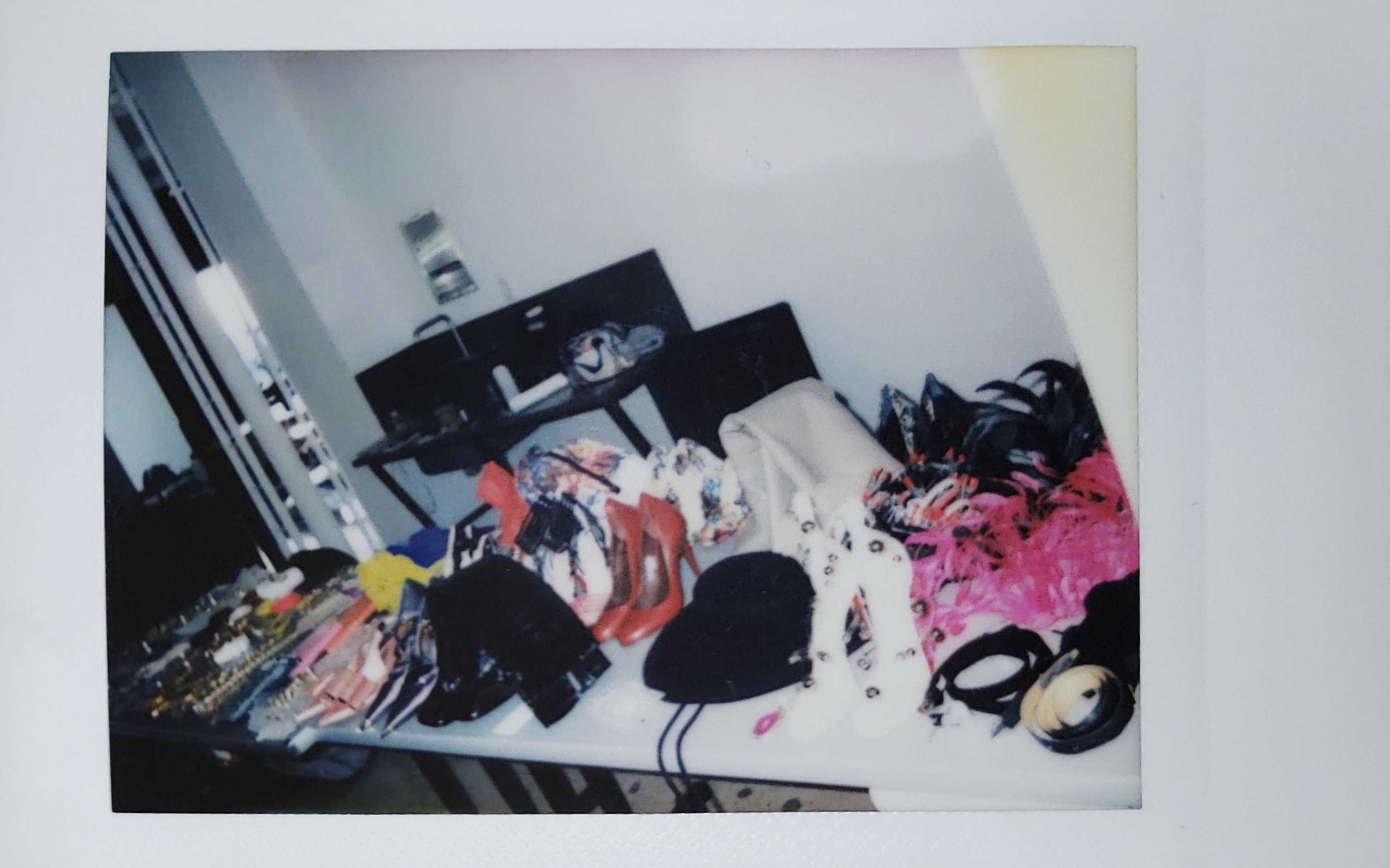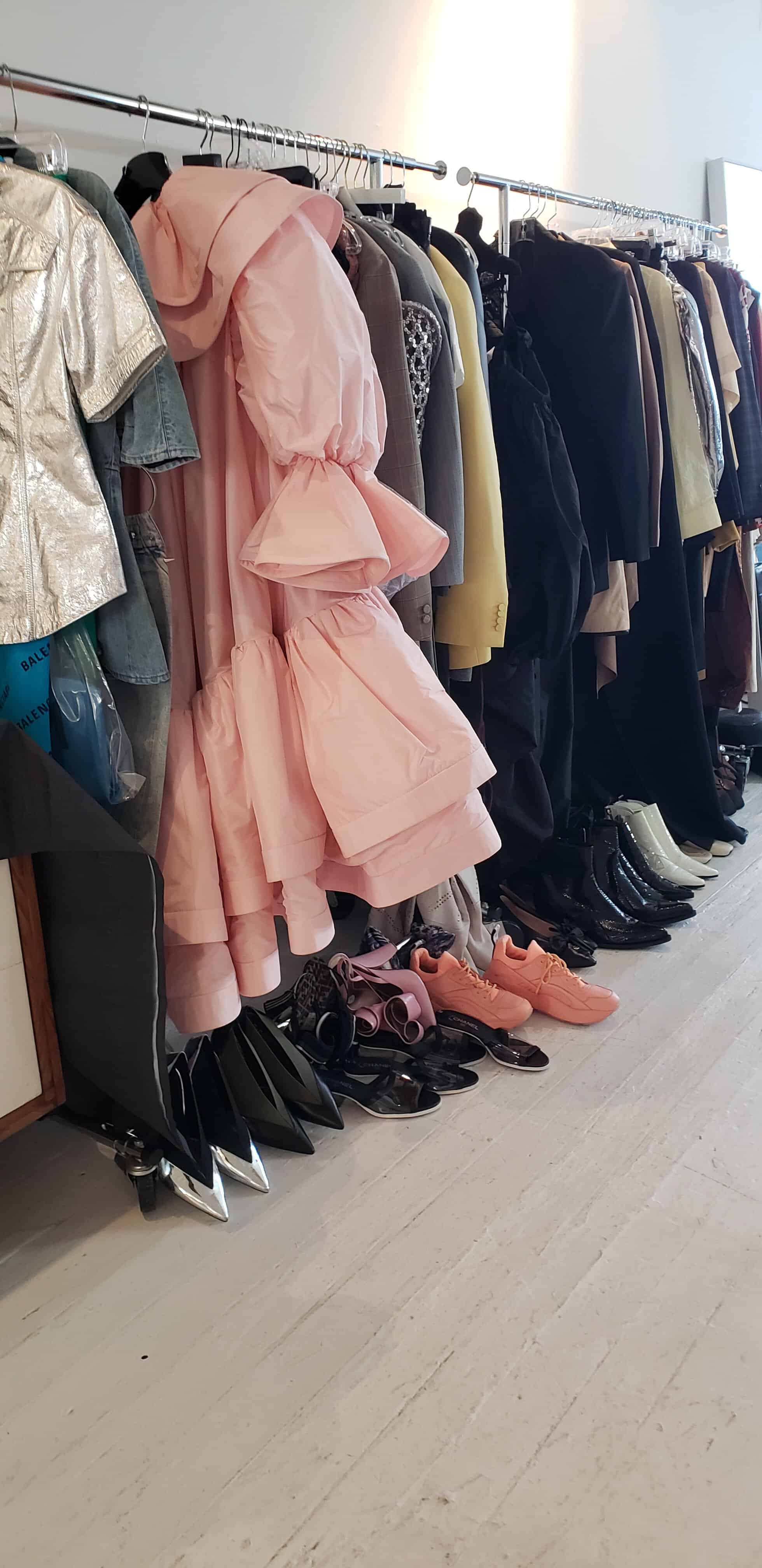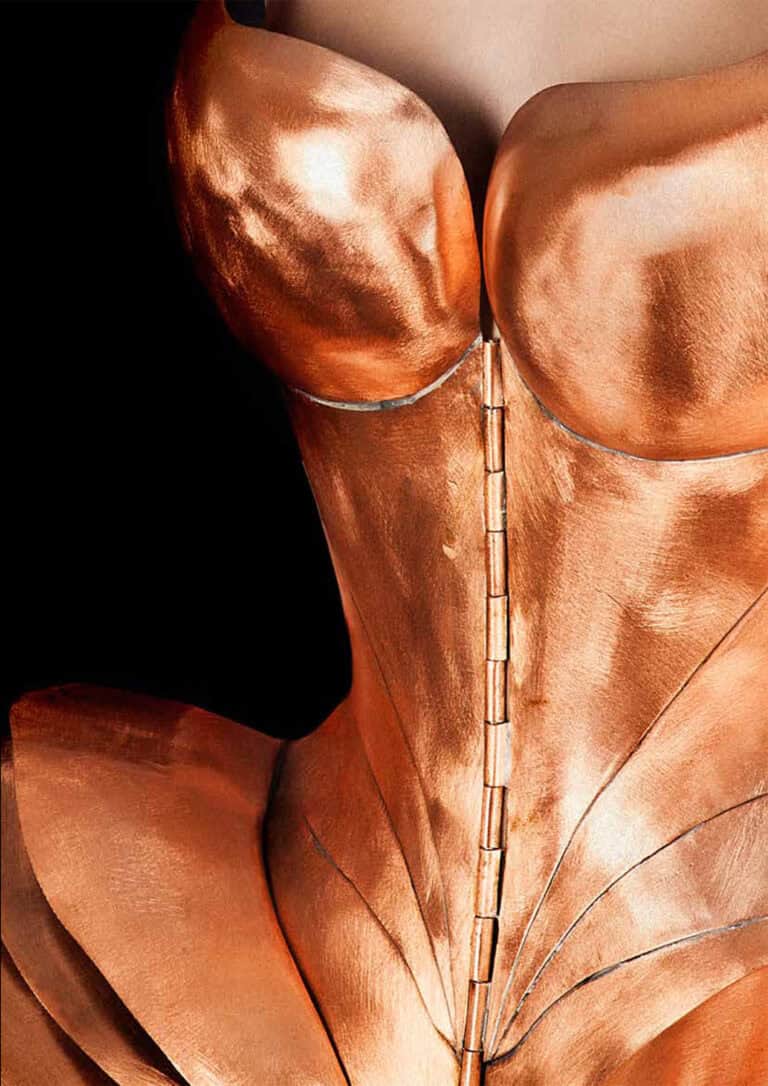
Anna Katsanis: the Business of Being a Fashion Stylist
Brendan Cannon
A career as a stylist sounds like a dream job if one loves fashion, shopping and dressing up. However, starting a career as a fashion stylist is challenging; it’s hard work, there aren’t many websites or manuals to help you figure out the specifics, and without a mentor you’re basically on your own. New York based stylist Anna Katsanis is responsible for some of the best dressed celebrities and most creative fashion editorials. She is currently the Editor-At-Large of Vogue Greece but she has styled for Harper’s Bazaar, Grazia, Elle, L’Officiel, Marie Claire, Glamour, Nylon, multiple Vogue locations and the list goes on and on. She has been in the business of fashion for 15 plus years, and lucky for you fashion lovers she has shared her wisdom in her book “Larger than Vogue, the Business of Being a Fashion Stylist”. We sat down with Anna Katsanis to get her thoughts on the industry, and what it takes to make it.

IRK: NYC gal! We love that ! How has your education at St. John’s University & Fashion Institute of Technology prepared you most for your career as a stylist?
Anna: Studying business management and advertising and marketing communications taught me the business side of the industry or the client side so it gave me a more rounded education as opposed to just the creative side. I took a lot of math classes, so it helped prepare me for the business side; like keeping track of my expenses and percentages and breakdowns. I learned how to put together a proper business plan, different practices and industries. Everything else I learned being on set assisting and then working.

IRK: What is the greatest piece of advice that you have been given for your career and who gave it to you?
Anna: A makeup artist friend of mine once said your agent is not your boss recently and I loved that. I do believe that your agent can be a partner in your work journey but in no way shape or form are they to come down on you or tell you what to do. They can advise you and help you. They work for you and not the other way around. One of my first professors at FIT said, “The devil is in the details.” That always stuck with me throughout my entire career. Nothing is more important than the smallest or largest of details when it comes to the scope of a project. The last thing you want is for you to forget a very important detail like the sizing for a model or the type of season you’re shopping for. Always pay attention to the details.

IRK: STYLING such a demanding career, what do you do to maintain a good work-life balance and how important do you think this is? Anna: For a long time, I definitely prioritized work over balance, but as I got older, I started learning how to balance work-life by making myself and my partner my priority. You can always have another job or cover but you only have one life so you can live to work or really live your life. We are replaceable on set. There is only one you. Also, I spend as little time on my laptop as possible and try to limit work after business hours unless I am on a deadline or it’s a last-minute shoot. I used to spend days on end sending requests, but I have since learned to delegate to my team as much as I can. I make sure to make time for travel and self-care because with this industry it’s really easy to get burned out quickly.

IRK: What has been your favorite project to work on and which one are you proudest of? (include the image if possible) Anna: I have always loved working on the Swarovski campaign the first year Karlie Kloss became the brand ambassador for the brand. I got to style 10 OG influencers, Brian Boy, Tommy Ton, Margaret Zhang, Zanita, Harley Viera Newton, Winnie Harlow, Chanel Iman. It was an amazing experience. We did video, print, everything. They had rented out all of Pier 59 studios. It was the biggest production I had worked on up to that point in my career. IRK: What inspired your book Larger than Vogue, the Business of Being a Fashion Stylist?
Anna: A few years ago, I had a bad accident on set, and I was on bed rest for 8 weeks so a photographer friend of mine suggested I finally write that book I have always spoken about so that’s what I did. That was 6 years ago, and I just kept going until about a year ago. What really inspired the book ultimately was that there was no other book when I started styling full time 15 years ago except a 1 paragraph excerpt from a production book. A lot of stylists were talking about the creative side but not the business side. I wanted to also showcase behind the scenes element from some of my favorite shoots that I had the opportunity to work on. I wanted to be able to show that you can be creative and still make money. IRK: How did you feel at the start of writing it, while writing it, once it was finished and once it was published & in your hands?

Anna: At the start of writing, it was so exciting because it was a complete blank slate, and I could write the story the way I wanted it. It also felt like I was writing my own autobiography, I basically started writing it from the viewpoint from the start of my career and what I had to go through to get to where I was today. I kept pausing from writing the book because I wanted to use real experiences from set and every time, I would be on set I would have another piece of information I wanted to include. I wanted the experiences to be varied so that I can include as much information as possible in the book for people to be able to utilize when they were on set. I finished the book around the start of 2020 just before the pandemic. 2 years later I picked the book backup and updated it tremendously since the industry had changed a lot and even items included in my kit that I would not normally have like masks, extra hand sanitizer, became priority so I updated a lot of the sections. Many of the companies I referenced went out of business, so I updated that as well. The industry changed as a whole, so I updated the book sections to reflect those changes. IRK: How did you develop the different parts of the book?
Anna: I decided to develop the different parts of the book by grouping the most important ones together. Behind the scenes, getting started, agents, styling an editorial, working with clients, setting up your remote styling business. I chose 10 different areas to focus on.
IRK: What did you look for in a stylist when choosing who to interview?
Anna: I was looking for stylists from all different experience levels in their careers. I wanted it to be super varied from assistants to stylists starting out to people who had been in the industry for many years. I came up with the list of questions to be as varied as possible. I wanted people to feel comfortable telling me their good and bad experiences and people did not hold back which I really found the most interesting. I also decided to include everyone’s social media handles so that 5 years later people can see where they currently are in the industry. Some left and pursued other careers, others flourished and became successful stylists (however you measure success meaning someone who became a stylist and worked for different companies and magazines and was signed to a reputable agency) everyone’s definition of successful is different, it was really amazing to see where everyone ended up.

IRK: What aspects of the styling industry do you feel have been lost and wish would return? Anna: With Instagram and social media everyone is an instant stylist people aren’t taking their time to hone their skills instead their getting a big celebrity right away but then don’t know anything else. On set experience is so valuable. I feel like a big aspect of styling that has changed is that everyone focuses only on celebrities and influencers and there is so much more than just social media to being a well-rounded stylist. When I was starting out people were excited to learn about fashion show styling, television styling, consulting, etc., working in house for a brand but now everyone just wants to work with someone famous. I understand that by working with talent of varied levels can lead to endorsements and big covers, but my point is don’t throw all your eggs into one basket. Maybe there is something else you might enjoy more or at least learn. IRK: Where do you see the fashion/styling industry going in the near future? & the metaverse ?
Anna: I am not sure, but I am excited to see where it goes. I am sure there will be a new platform for artists to showcase their work. I know there’s been a lot of sites in recent years that try to get rid of the agent as the middleman and have you book direct. It will be interesting to see what happens with agencies as a whole who maybe have not caught up with social media to see where they partner up and go. I think brands are using apps like TikTok and Instagram to promote their products. We have already seen a big course of styling with many editors moving to retail sites like forward, farfetch etc. And to streaming platforms like Netflix, Hulu, etc. A lot of companies are scouting these editors for their vast experiences in editorial to head up their streaming platforms in specific areas. It’s happening all the time. A lot of stylists continue to collaborate with brands with capsule collections as well department stores. It will be interesting to see where things go for sure.

IRK: What is your advice to someone just starting out without any connections, trying to cold-email stylists for internships and assisting?
Anna: Email everyone possible, if you don’t ask, the answer is always no. Put yourself out there, meet people at events, network, cold email editors from mastheads. People are always looking for an extra pair of hands to help. Offer to help them out. They might not be able to use you right away, but they will keep you in mind as opposed to someone who never reached out. If there is a need there will be a way. Even if you’re the 10th intern to the first or 2nd assistant if you want to get your foot in the door you will but be prepared you won’t be the only one. IRK: Biggest pitfalls to avoid?
Anna: Try not to burn any bridges, you don’t know when you might need them later on in your career and if you burn some bridges, keep it moving. Don’t get emotional. Don’t lose yourself. Stay true to your goals. Enjoy the journey it goes so fast take some time to appreciate it.



IRK: The moment you felt you made it?
Anna: The moment I truly felt like I made it and was recognized was when I was credited as contributing NY fashion editor at Harper’s Bazaar International where I worked for 3 years and then again when I was credited as Editor-at-Large for Vogue Greece.
IRK: What is one word for how you hope your readers feel when they are finished reading the book?
Anna: Knowledgeable.
IRK: What is the most valuable piece of information that you feel is in the book?
Anna: Keep learning. Always stay curious. IRK: How hard was it as a woman stylist?
Anna: Honestly, I don’t personally feel it was any harder for me as a woman, I think it was harder for me because of my age. I started assisting and interning when I was 19 so I had amassed a large body of work by the time I was 30 and was not taken very seriously by many agents for a long time. IRK: What advice do you have for emerging stylists? emerging women stylists?
Anna: Work hard, don’t give up. Think outside of the box. Get uncomfortable. Put yourself out there. Don’t worry about what others think. Opinions are like buttholes everyone has one.
Share this post
Cannon is our Editor-At-Large since August 2016. He grew up in New York City and was influenced at an early age by rock and fashion. He is an award-winning celebrity stylist, fashion editor and creative director who has styled many of his favorite musicians including Annie Lennox, Cyndi Lauper, Jimmy Page and Shirley Manson. His wit, charisma, and style have made him a trusted and sought-after stylist by Hollywood legends such as Liza Minnelli, Willem Dafoe, Dennis Hopper, and Glenn Close.
Cannon has also worked with some of today's hottest celebrities, including Diane Kruger, Angelina Jolie, Matt Damon, Penn Badgley and Kellan Lutz. He was the first stylist to get Barbra Walters into a pair of jeans for a photo shoot, and had the opportunity to dress Michael Jackson as the KING OF POP for MTV. In addition, Cannon also founded PLUMA- a luxury costume jewelry collection made exclusively in Italy that was recently featured on the cover of Italian Vogue. As a result of working with great musicians and celebrities, Cannon has contributed to multiple publications including: Rolling Stone, Vogue, Time, Entertainment Weekly, Vanity Fair and W. He has styled large casts for every network including: Lost, Sopranos, The View, Project Runway, Kelly, The Today Show, Top Chef, and The Office. Cannon's expertise in fashion also has lent itself to him being in front of the camera as a style expert, with television appearances on E!, Style, VH1, CBS, NBC, ABC, TLC, and Bravo. Cannon has been an on-air spokesperson for TJ Maxx, Burlington Coat Factory, Chapstick, Pantene, Dove, and Peanuts/Snoopy Worldwide. He has also been profiled in American, German and Japanese publications. In addition, Cannon was instrumental in organizing an inaugural panel discussing fashion and film for MEIFF in which he also served as a participant alongside Jason Wu and Kathryn Neale Shaffer, contributing editor at American Vogue.
Whether it's obtaining real museum pieces for a Discovery Channel commercial or recreating 50 unique culturally observant costumes for the worldwide launch of the National Geographic Channel, Cannon's respect for authenticity and his gift of problem solving has left lasting impressions on everyone he has worked with. Additional commercial work also includes Saks Fifth Avenue, Target, Sony Music, RCA, Bravo Network, Sprint, Bergdorf Goodman, and Neiman Marcus.
Cannon has styled fashion shows for Jason Wu and the Life Ball in Vienna, Austria, starring THE BLONDS, which is the largest AIDS benefit runway show in the world, that year hosted by President Bill Clinton and Eva Longoria. Other fashion shows include Snoopy in Fashion, Joanna Mastrioni to name a few. He has also styled shows for Safilo and their licensed brands, which include Gucci, Christian Dior, Emporio Armani, Ralph Lauren, Dior Homme, Max Mara, Marc Jacobs, Marc by Marc Jacobs, Stella McCartney, Banana Republic, Tommy Hilfiger.
Read Next




